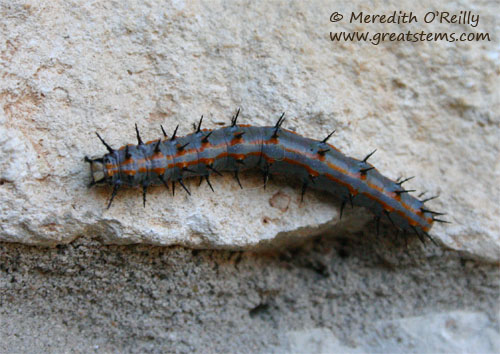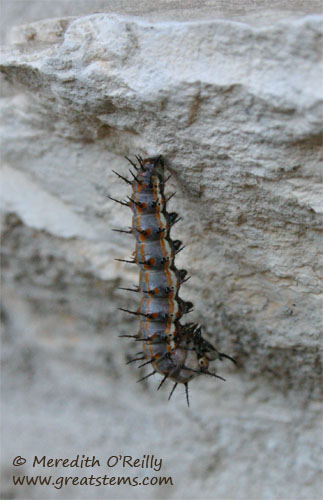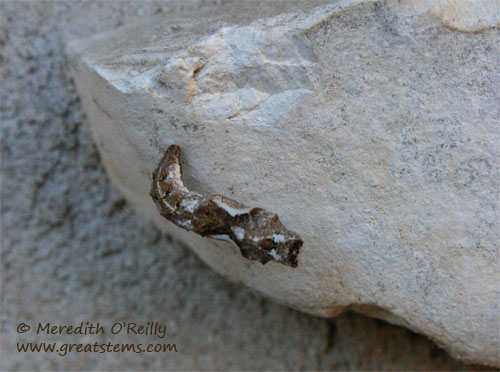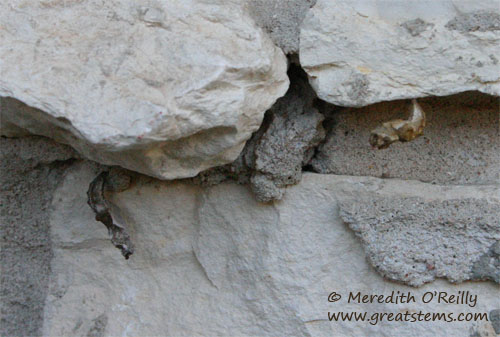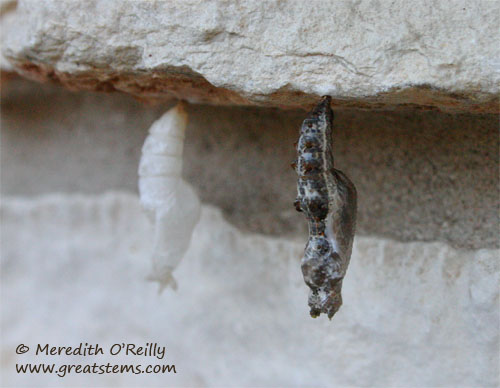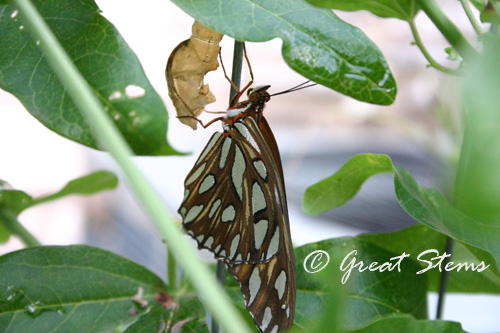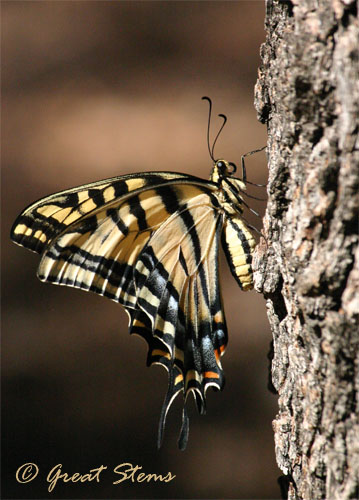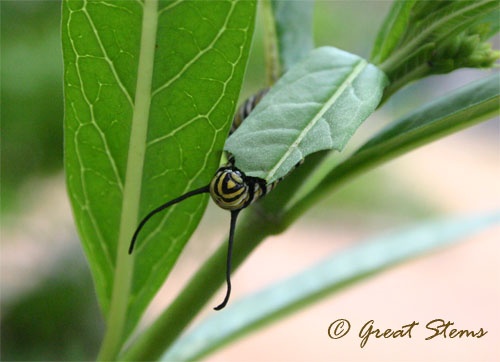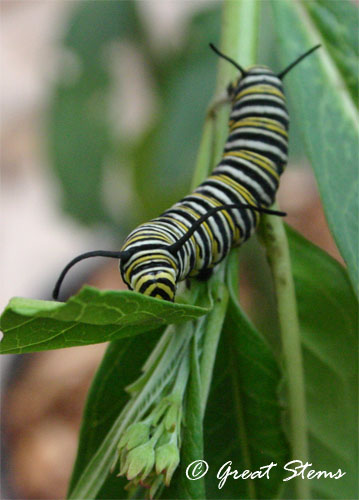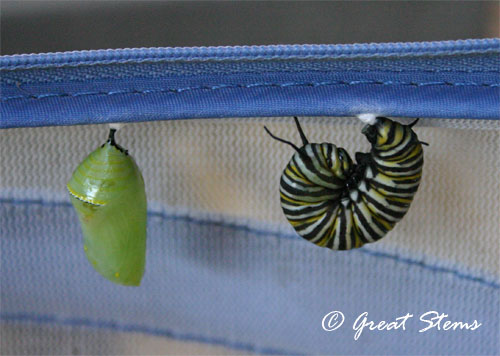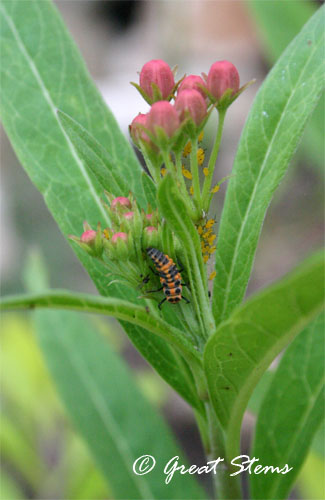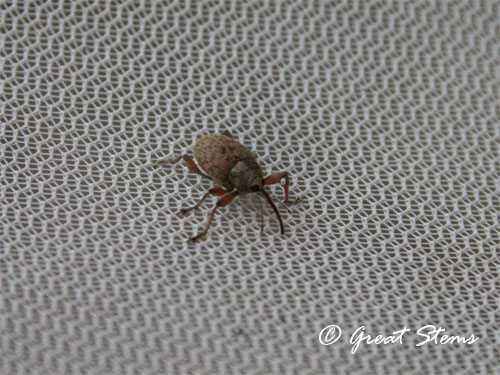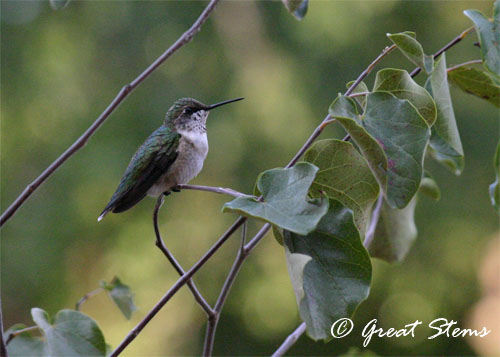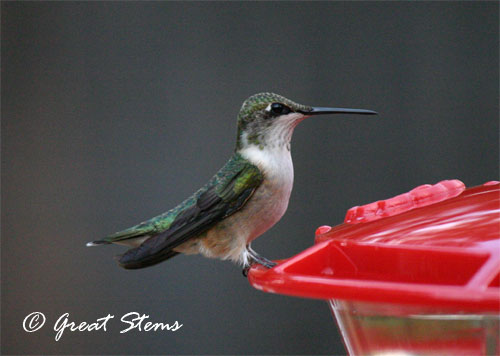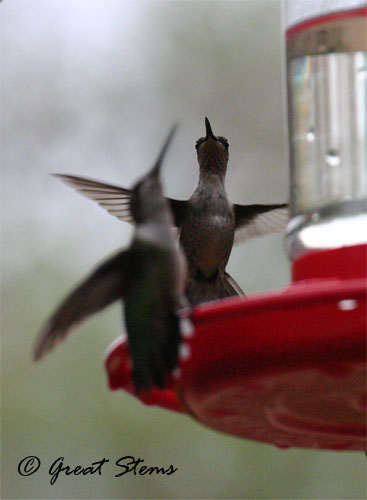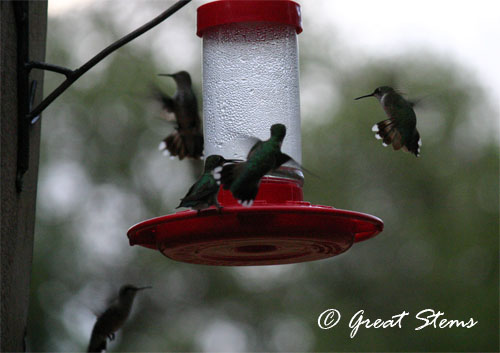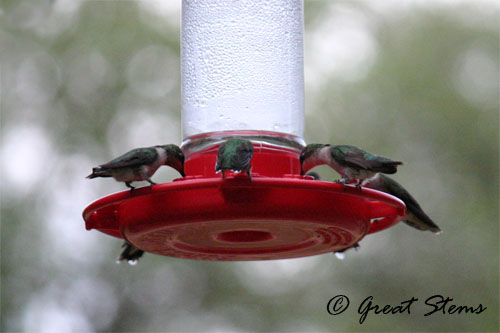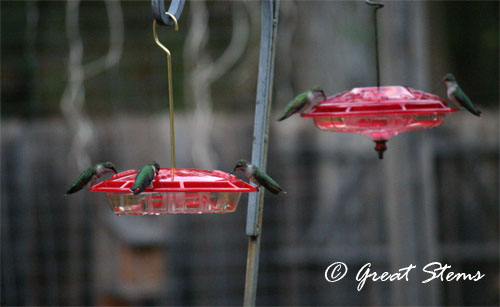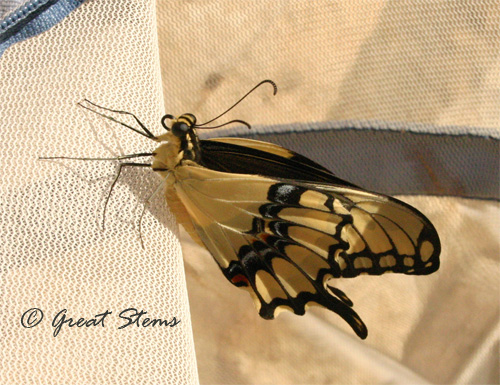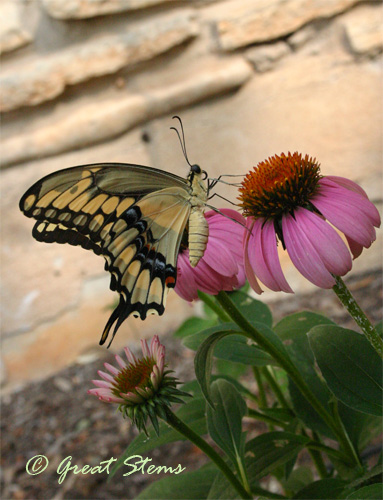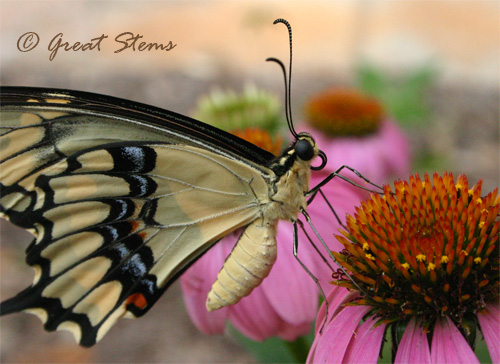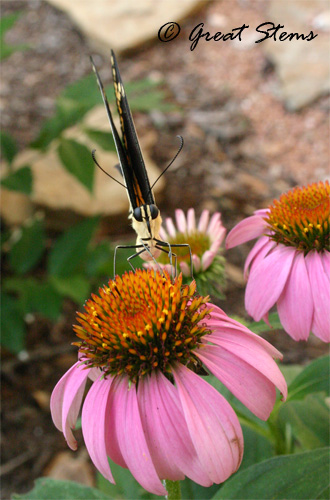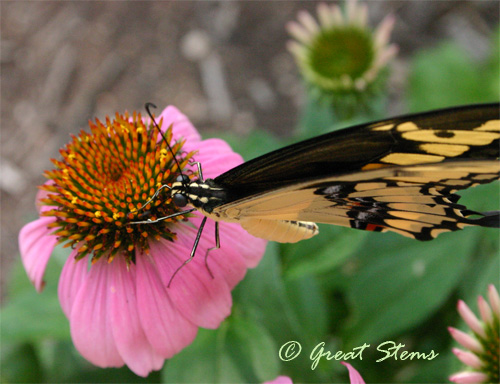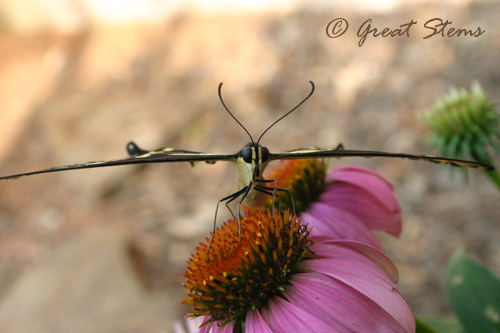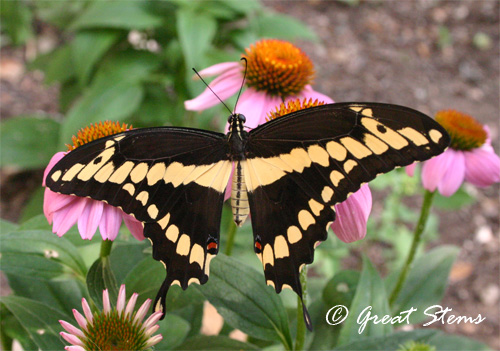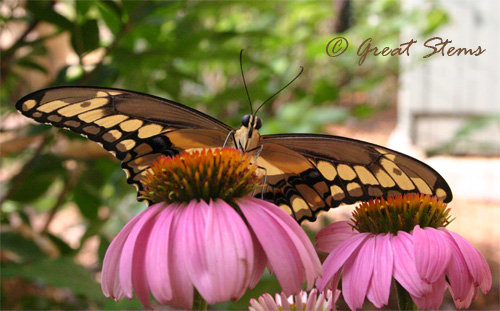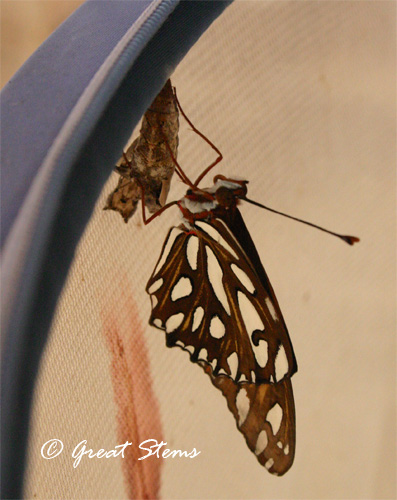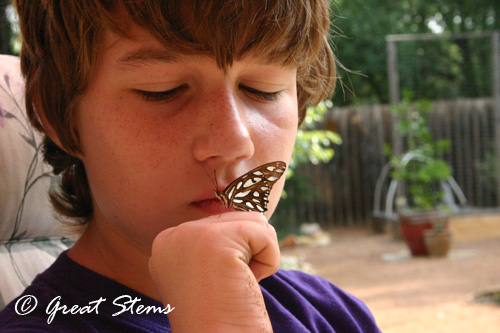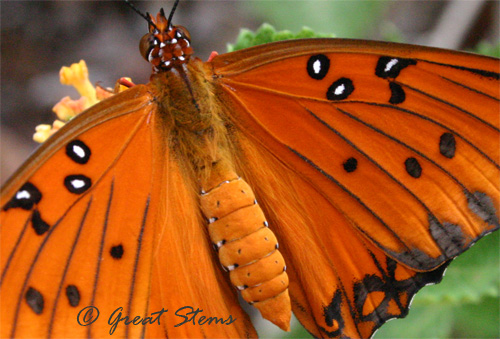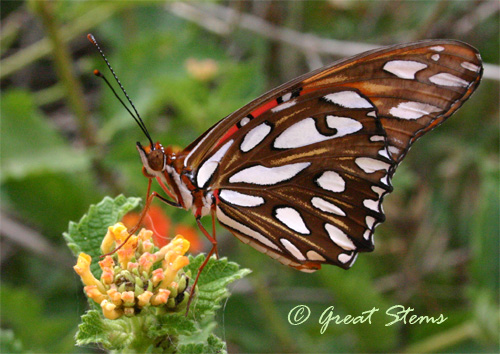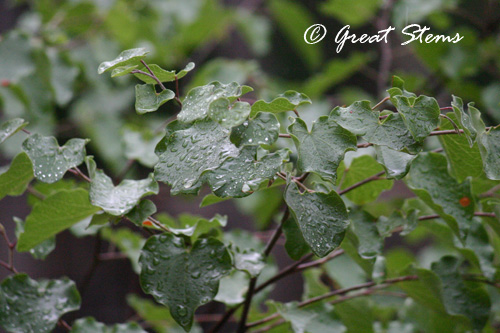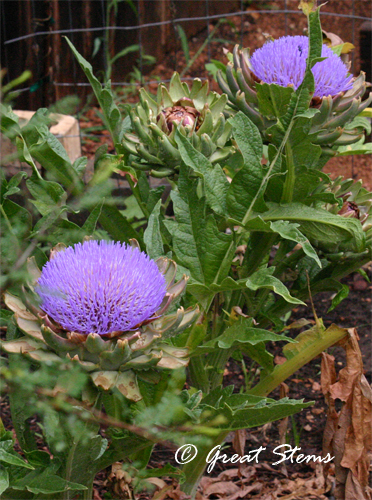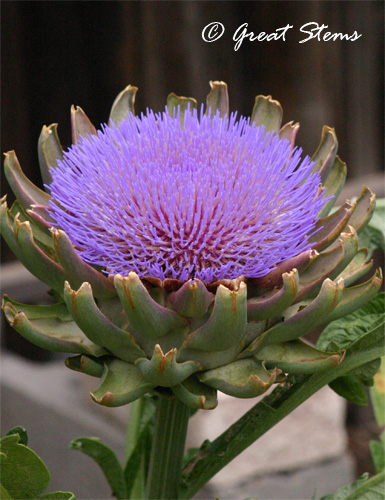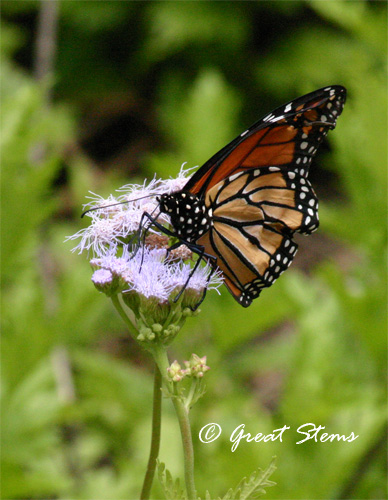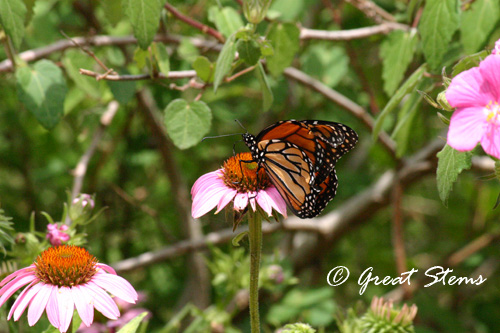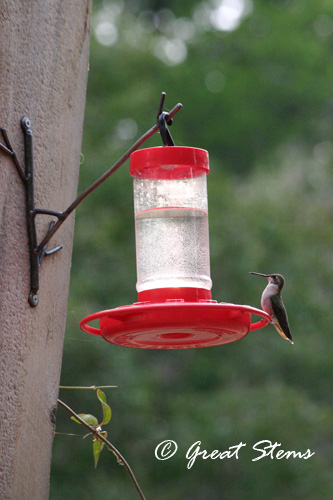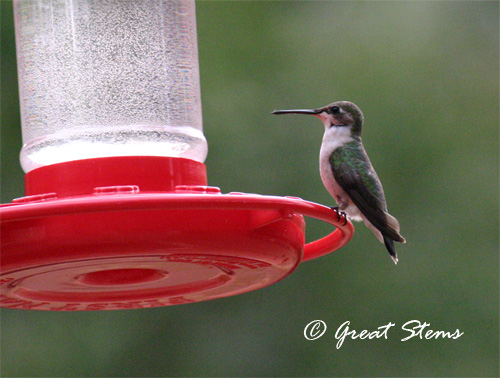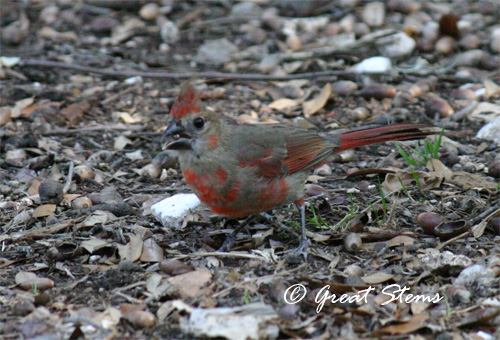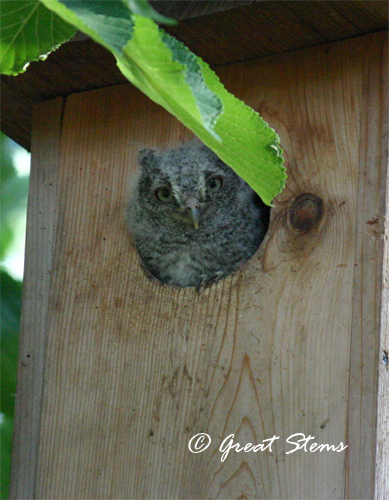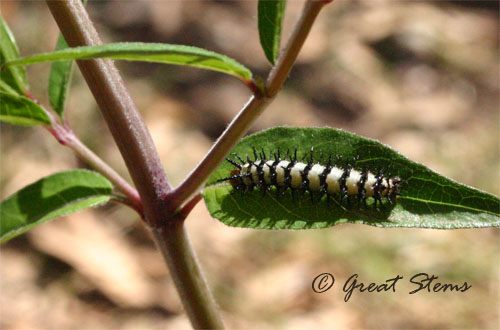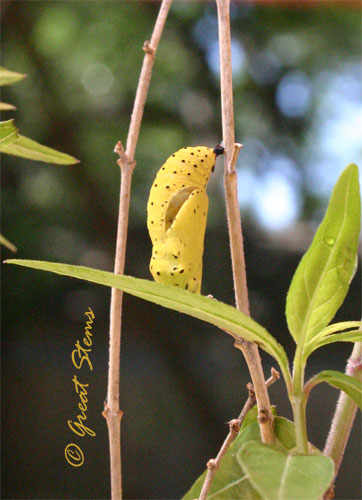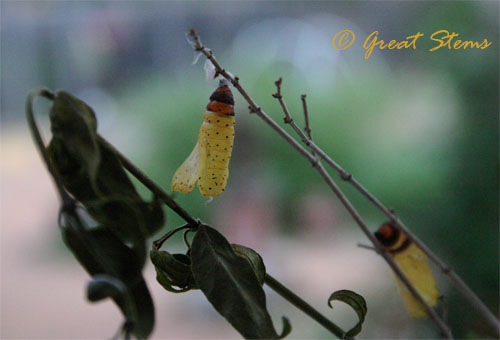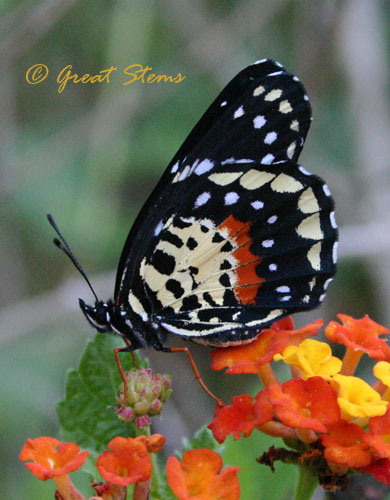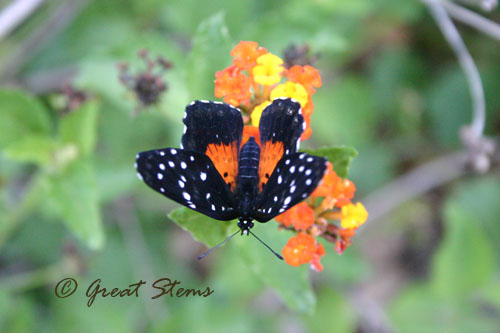Raising caterpillars has become a favorite side hobby of mine. I grow native host plants for many different species of butterflies to lay their eggs on, and most of the time, the caterpillars are on their own in the garden. But some butterflies only lay a few eggs at most, and I like to give the caterpillars a safe area where they can eat and grow, and grow and eat, without fear of becoming another animal’s lunch.
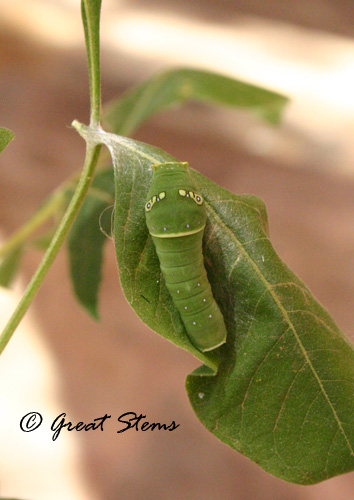 Here in Central Texas, some of the best known butterflies are those in the Swallowtail family — they are large, beautiful, and quite mesmerizing as they flutter around the garden or into the woodlands. Two of my favorite species use the same host plant, the Wafer Ash, or Hop Tree (Ptelea trifoliata). They are the Giant Swallowtail (Papilio cresphontes), seen at the end of this post, and the Two-Tailed Swallowtail (Papilio multicaudata), the latter bearing a remarkable resemblance to the Eastern Tiger Swallowtail.
Here in Central Texas, some of the best known butterflies are those in the Swallowtail family — they are large, beautiful, and quite mesmerizing as they flutter around the garden or into the woodlands. Two of my favorite species use the same host plant, the Wafer Ash, or Hop Tree (Ptelea trifoliata). They are the Giant Swallowtail (Papilio cresphontes), seen at the end of this post, and the Two-Tailed Swallowtail (Papilio multicaudata), the latter bearing a remarkable resemblance to the Eastern Tiger Swallowtail.
In the above picture and next several photos, you can see the different stages of the Two-Tailed Swallowtail caterpillars. Caterpillar growth stages are called instars. The Two-Tailed’s fifth instar stage is its final one.
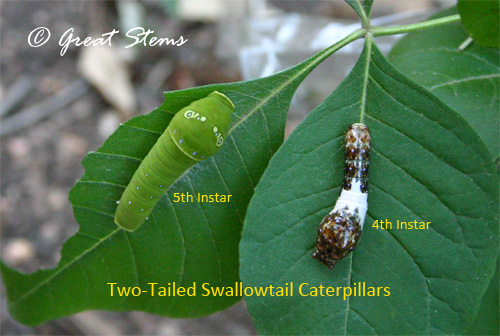
When the caterpillar is young, it looks a little like bird droppings, as do many other caterpillars in the Swallowtail family.
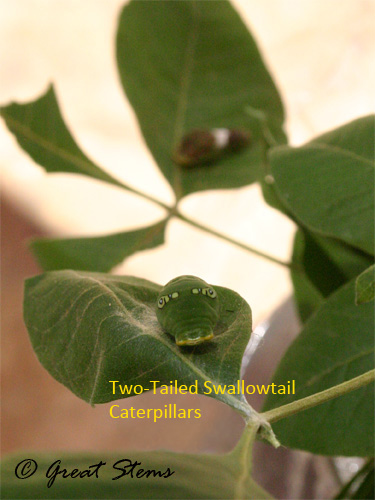
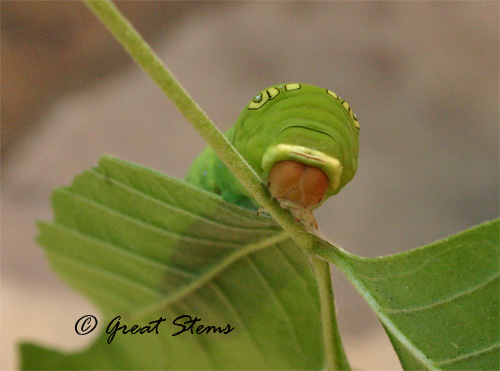
But in the transition to fifth instar, the caterpillar changes dramatically to a beautiful lime green color, with eye spots and a black band.
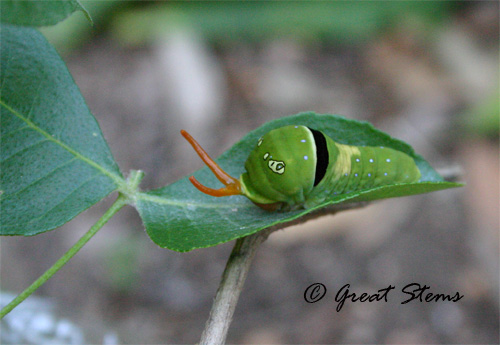 This early fifth-instar caterpillar is showing its osmeterium, a defensive response of a Swallowtail caterpillars when they feel threatened. I discourage anyone from deliberately stressing a Swallowtail caterpillar to make it show its osmeterium. This caterpillar only showed its osmeterium because I was nudging it to move to fresh foliage. You can tell the caterpillar is an early fifth instar because evidence of its once-white saddle is still visible on its back — in time the saddle area will be as green as the rest of the caterpillar.
This early fifth-instar caterpillar is showing its osmeterium, a defensive response of a Swallowtail caterpillars when they feel threatened. I discourage anyone from deliberately stressing a Swallowtail caterpillar to make it show its osmeterium. This caterpillar only showed its osmeterium because I was nudging it to move to fresh foliage. You can tell the caterpillar is an early fifth instar because evidence of its once-white saddle is still visible on its back — in time the saddle area will be as green as the rest of the caterpillar.
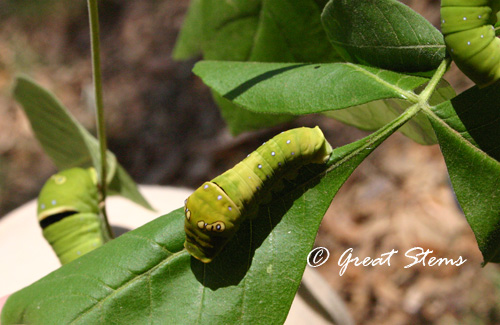
Another early fifth instar shows its somewhat mottled coloration as it transitions to full green.
A late fifth instar turns brown, and then the quest is on for an ideal, secluded chrysalis spot.
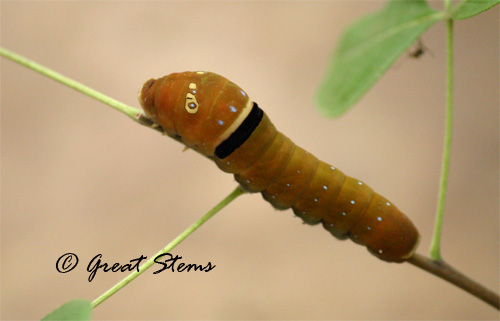
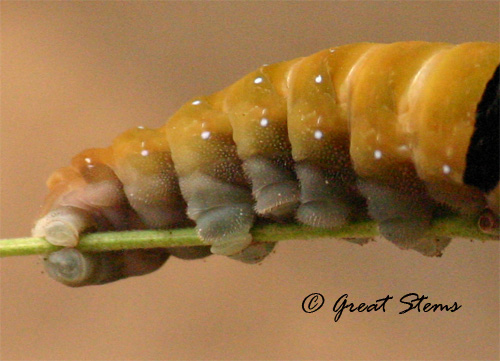 Its nifty feet will transport the caterpillar quickly. I never tire of watching the movements of a caterpillar.
Its nifty feet will transport the caterpillar quickly. I never tire of watching the movements of a caterpillar.
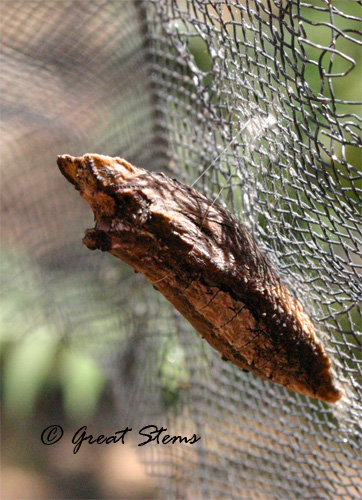
The Two-Tailed Swallowtail can take many months before it emerges from its chrysalis. So don’t hold your breath for a photo any time soon! But I look forward to that follow-up post.
Moving on to the Giant Swallowtail, I get to start first with the eggs this time. A Giant Swallowtail egg is a tiny orange sphere that darkens with time. There are two in the image below. Guess which one hatched first.
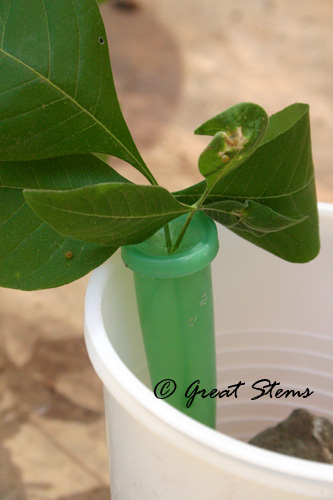 Note the foliage setup at this point — I collected the leaves with eggs and placed the petioles in a little floral water tube, making sure there were plenty of extra leaves to fill the space in the hole. The advantage to this is that the eggs and tiny caterpillars get their own area in the Caterpillar Hotel — the larger Swallowtail caterpillars would eat the eggs (and baby caterpillars) if they ran across them on their leaves, so it’s best to keep the “nursery” leaves out of their reach.
Note the foliage setup at this point — I collected the leaves with eggs and placed the petioles in a little floral water tube, making sure there were plenty of extra leaves to fill the space in the hole. The advantage to this is that the eggs and tiny caterpillars get their own area in the Caterpillar Hotel — the larger Swallowtail caterpillars would eat the eggs (and baby caterpillars) if they ran across them on their leaves, so it’s best to keep the “nursery” leaves out of their reach.
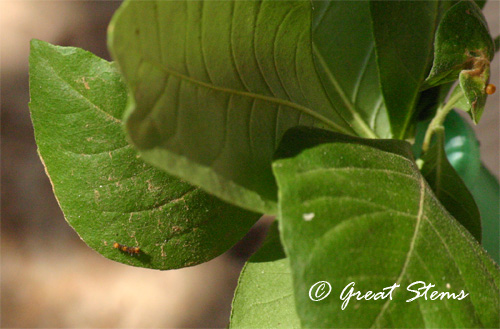 When the baby caterpillar emerges from the egg, it consumes the remaining shell before getting its first taste of the host plant. Can you see the tiny caterpillar as well as the second egg?
When the baby caterpillar emerges from the egg, it consumes the remaining shell before getting its first taste of the host plant. Can you see the tiny caterpillar as well as the second egg?
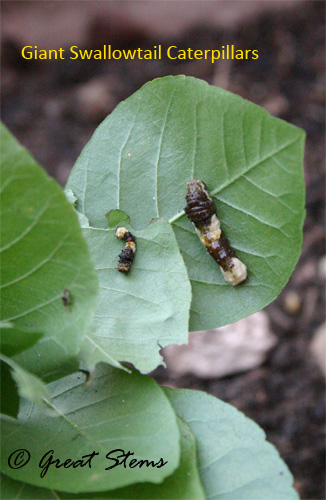 Almost two weeks later, the first caterpillar is about 1/2-inch long, and the second egg’s caterpillar is now the tiny one — both officially are looking like bird poop. They are just a few days apart in age. FYI, even though I grouped them for the photo, it’s best to keep young caterpillars separated if you can. They sometimes don’t play nicely if they happen upon one another.
Almost two weeks later, the first caterpillar is about 1/2-inch long, and the second egg’s caterpillar is now the tiny one — both officially are looking like bird poop. They are just a few days apart in age. FYI, even though I grouped them for the photo, it’s best to keep young caterpillars separated if you can. They sometimes don’t play nicely if they happen upon one another.
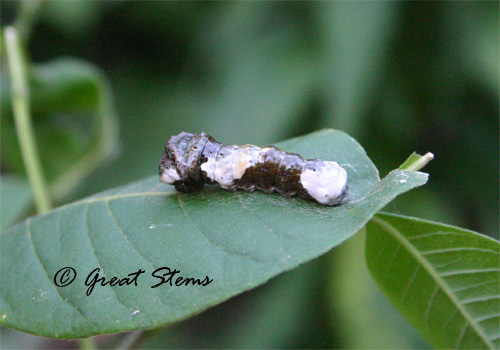
A slightly larger Giant Swallowtail really exhibits that bird poop look.
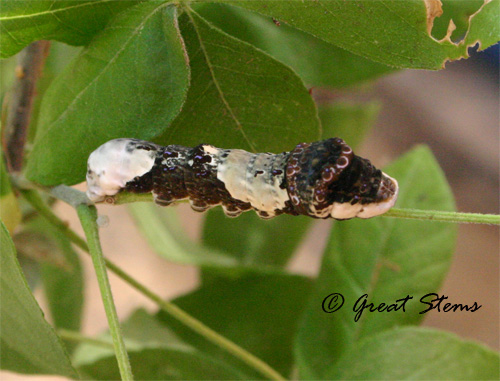
The final instar means its time to go to chrysalis.
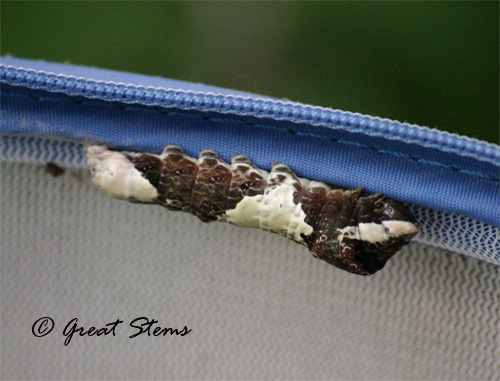
Up to the top of the hotel the caterpillar climbs. The hotel is getting as crowded as if it were SXSW in Austin.
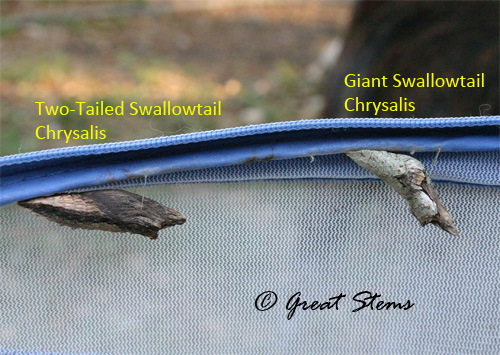 Here are the two species’ chrysalises side by side. Remarkably different, eh?
Here are the two species’ chrysalises side by side. Remarkably different, eh?
And as another comparison, here are the Giant and Two-Tailed caterpillars side by side.
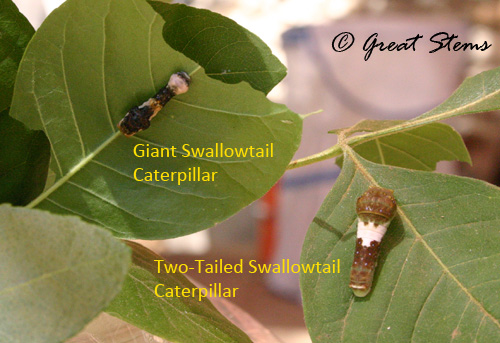
Note the difference in coloration, particularly at the end of the caterpillars. The Giant has two large areas of white, while the Two-Tailed primarily has just the saddle on its back.
We have one more species in the hotel right now — not a swallowtail, but a Gulf Fritillary.
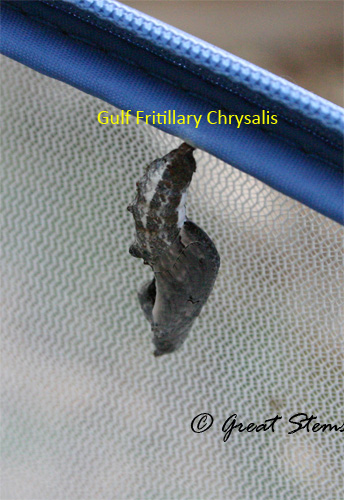 Normally we have many, many Gulf Fritillary caterpillars on the Passionvine, but I happened to be out by the vine when I saw a hunting wasp getting really close to this one. I had to save the little guy, and within a day it went to chrysalis in the hotel.
Normally we have many, many Gulf Fritillary caterpillars on the Passionvine, but I happened to be out by the vine when I saw a hunting wasp getting really close to this one. I had to save the little guy, and within a day it went to chrysalis in the hotel.
The Caterpillar Hotel is simply a collapsible mesh laundry hamper. There are some very nice butterfly tents on the market, including ones with side openings, but the laundry basket was only $10 and thus much more reasonable for the budget-minded.
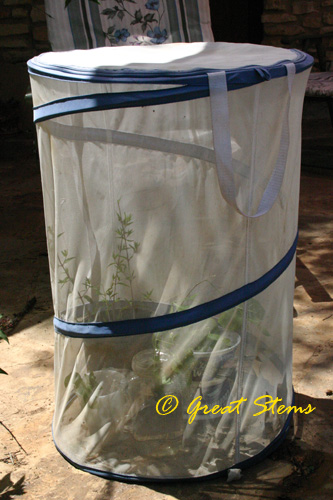
If you look inside, you can see the different methods I’ve experimented with for keeping the foliage fresh. Aside from using the floral water tube for small caterpillars and eggs on single leaves or leaflets, I like sticking leaf stalks and branches directly into damp soil. The leaves stay fresh, it’s easy to add water or replace foliage, and the caterpillars can crawl safely over the surface.
I can’t recommend the jar of water with a plastic wrap cover (held by a rubber band with foliage stalks or branches poking through a hole in the center). If the hole rips too wide, a caterpillar could fall into the water. I almost had two caterpillars drown when they got zealous in their foliage feasting and fell into the water — luckily I saw them in time (barely) and they survived (and are in chrysalis stage as I write this). Needless to say, I don’t use the jar method anymore. I also don’t like to place leaves in a bowl with little caterpillars — the leaves dry out too fast. Floral water tubes and damp soil in a planter are it for me now!
I’ll continue to play nanny to the young caterpillars, protect the chrysalises, and patiently wait for new butterflies to emerge in the Caterpillar Hotel.
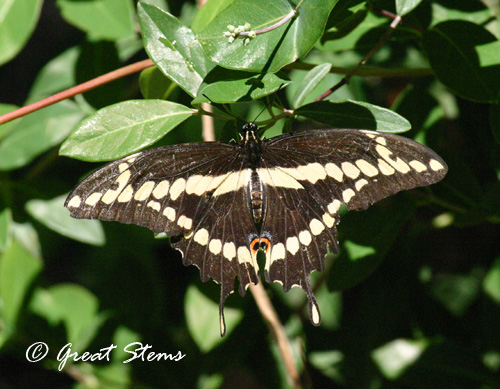
Someday, if all goes well, I’ll have giant Giants (like the one above) and Two-Tails with two tails to introduce to the world!
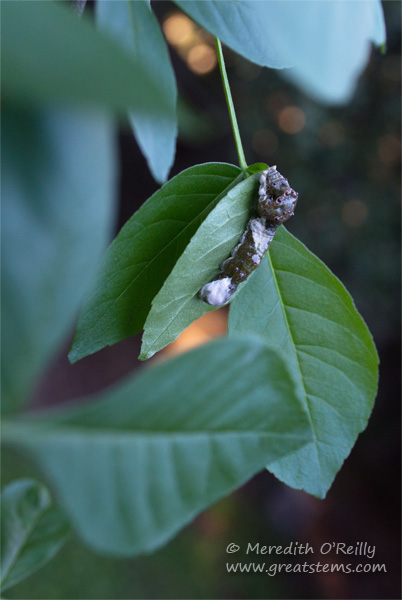 This year we had to transplant that now large Wafer Ash to the opposite side of the yard, and I feared that it wouldn’t survive. But amazingly enough it did, and we have our latest batch of bird-poop caterpillars. These little guys are making me so happy, and I really do feel at the moment like the garden has come full circle — I’m right back to seeing one the favorite fauna species I planted trees for all those years ago.
This year we had to transplant that now large Wafer Ash to the opposite side of the yard, and I feared that it wouldn’t survive. But amazingly enough it did, and we have our latest batch of bird-poop caterpillars. These little guys are making me so happy, and I really do feel at the moment like the garden has come full circle — I’m right back to seeing one the favorite fauna species I planted trees for all those years ago.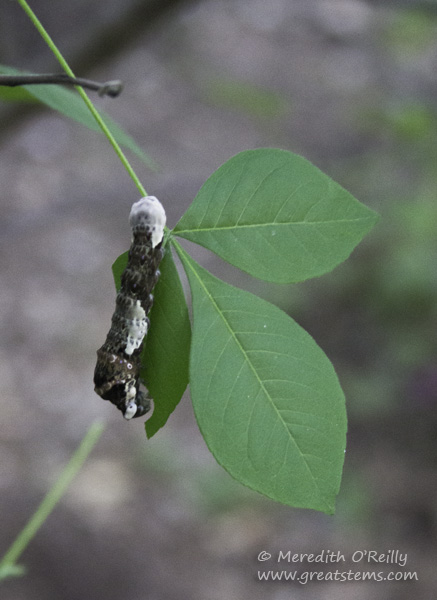 Wafer Ash is a small deciduous tree found in much of the eastern and southern areas of the United States and into Central America. Because it prefers part shade to shade for its light, it serves well as an understory tree. It earned its species name trifoliata for its characteristic three leaflets. Small white flowers in late spring give rise to wafer-like seeds come fall, hence one of its common names.
Wafer Ash is a small deciduous tree found in much of the eastern and southern areas of the United States and into Central America. Because it prefers part shade to shade for its light, it serves well as an understory tree. It earned its species name trifoliata for its characteristic three leaflets. Small white flowers in late spring give rise to wafer-like seeds come fall, hence one of its common names.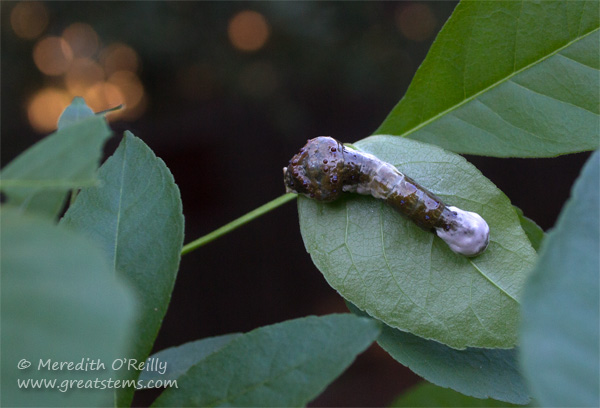
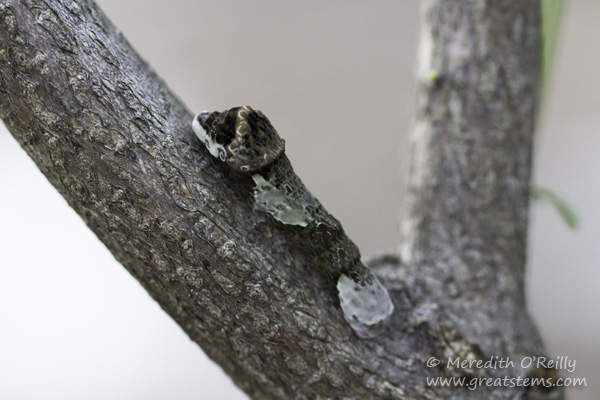 When these caterpillars take a rest, they are often found along the bark or branches of the tree, perhaps for camouflage or to simply avoid predators that might more easily locate them on the green leaves. As if that bird poop appearance isn’t enough to deter would-be munchers!
When these caterpillars take a rest, they are often found along the bark or branches of the tree, perhaps for camouflage or to simply avoid predators that might more easily locate them on the green leaves. As if that bird poop appearance isn’t enough to deter would-be munchers!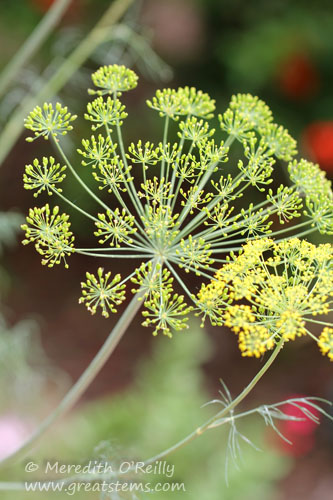 It being May in Texas now, this cool-season herb is overgrown in our garden and not as pretty as it once was.
It being May in Texas now, this cool-season herb is overgrown in our garden and not as pretty as it once was. 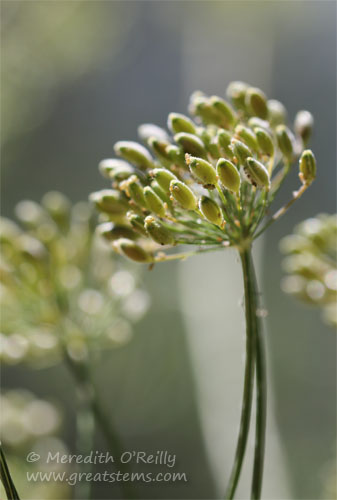 The blooms are giving way to seeds, but that’s not the problem. Aside from being long and lanky, much of it is now covered in aphids.
The blooms are giving way to seeds, but that’s not the problem. Aside from being long and lanky, much of it is now covered in aphids.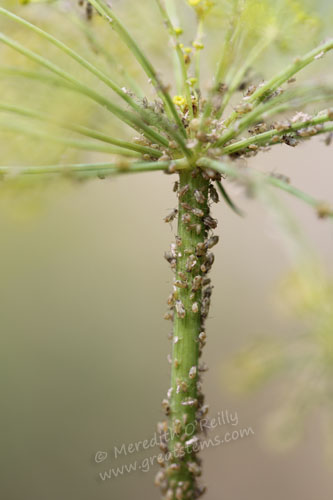 These pest bugs seem to suddenly show up by the hundreds, thanks to females that can produce live young without the presence of a male (when fall weather approaches, the females will produce males to allow the formation of eggs for overwintering). The aphids aren’t noticeably affecting the dill, but the tiny pests and plant legginess made me long to at the very least give the plant a good trim. But as soon as I took a closer look at the plant, I ceased the consideration of that idea — the dill is supporting a beautiful population of wildlife I do want.
These pest bugs seem to suddenly show up by the hundreds, thanks to females that can produce live young without the presence of a male (when fall weather approaches, the females will produce males to allow the formation of eggs for overwintering). The aphids aren’t noticeably affecting the dill, but the tiny pests and plant legginess made me long to at the very least give the plant a good trim. But as soon as I took a closer look at the plant, I ceased the consideration of that idea — the dill is supporting a beautiful population of wildlife I do want.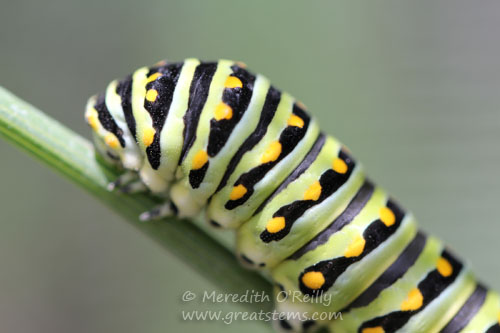 The biggest are the Black Swallowtail caterpillars. Gorgeous, they are.
The biggest are the Black Swallowtail caterpillars. Gorgeous, they are.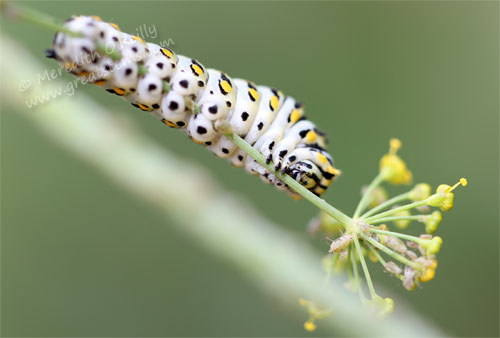
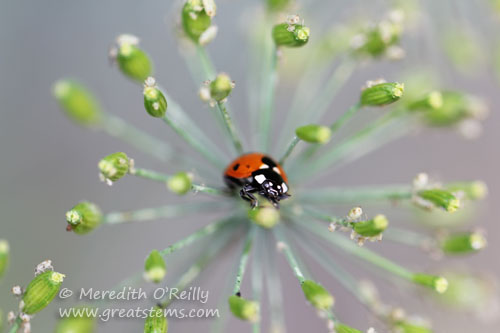 Lady beetles, popularly called ladybugs, dominated the rest of the dill. They are fierce consumers of aphids, and they have found quite the feast on my overgrown herbs.
Lady beetles, popularly called ladybugs, dominated the rest of the dill. They are fierce consumers of aphids, and they have found quite the feast on my overgrown herbs.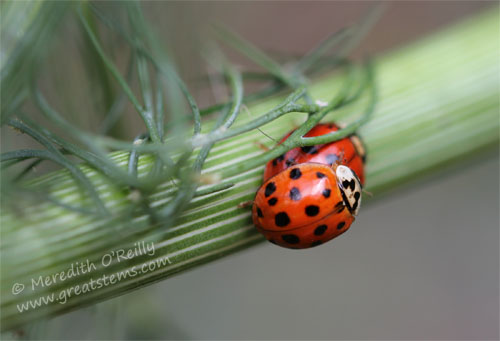 Many male and female lady beetles have paired up, and “in the mood,” they’ve been busy.
Many male and female lady beetles have paired up, and “in the mood,” they’ve been busy.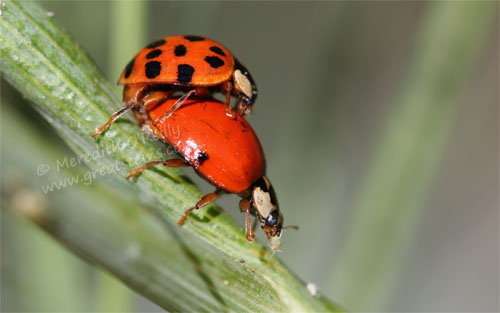 Actually, the females didn’t really stop to mess around, so to speak. The one above, for example, kept eating aphid after aphid, regardless of the male attached to her.
Actually, the females didn’t really stop to mess around, so to speak. The one above, for example, kept eating aphid after aphid, regardless of the male attached to her.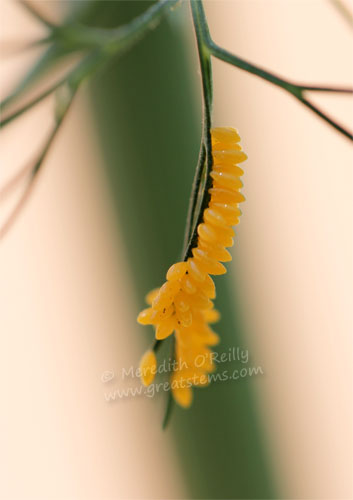 The result of happy lady beetle love? Happy lady beetle eggs, and lots of them.
The result of happy lady beetle love? Happy lady beetle eggs, and lots of them.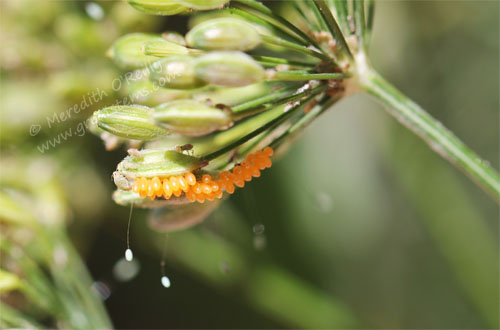 Here you can see both lady beetle eggs (the orange ovals) and lacewing eggs (the individually placed white eggs dangling from threads). I hope the lady beetle larvae emerge first and then skedaddle away before the voracious lacewing larvae arrive. But I’m not too worried, as there are plenty of aphids for them all.
Here you can see both lady beetle eggs (the orange ovals) and lacewing eggs (the individually placed white eggs dangling from threads). I hope the lady beetle larvae emerge first and then skedaddle away before the voracious lacewing larvae arrive. But I’m not too worried, as there are plenty of aphids for them all.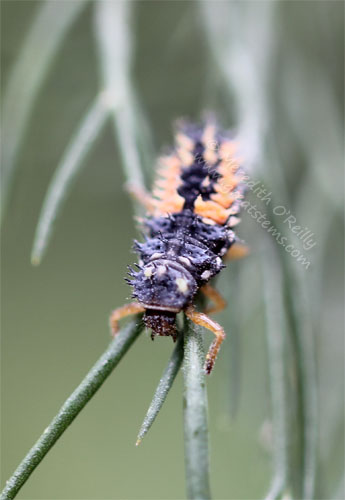 Ladybug larvae are rather alien-like in appearance, but they are gentle little things — well, not to aphids.
Ladybug larvae are rather alien-like in appearance, but they are gentle little things — well, not to aphids.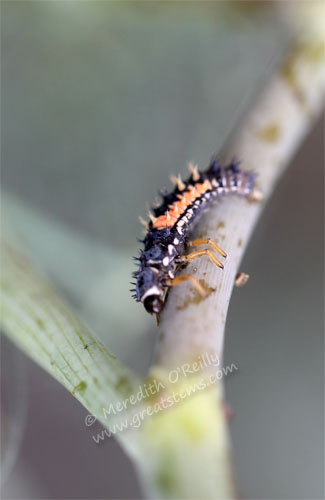
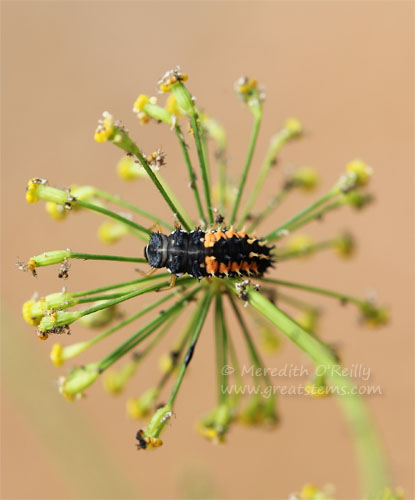
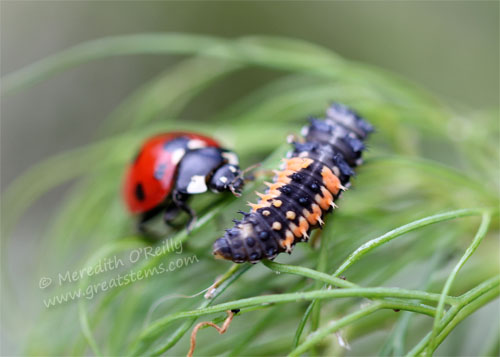
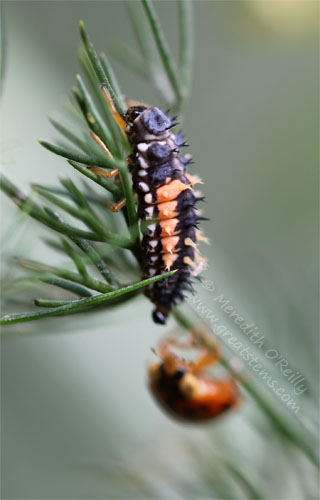
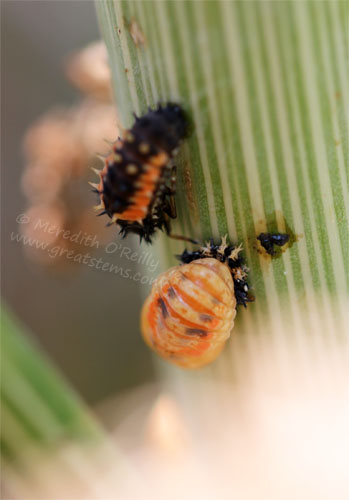
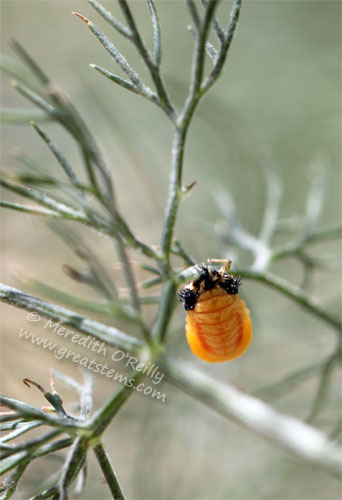
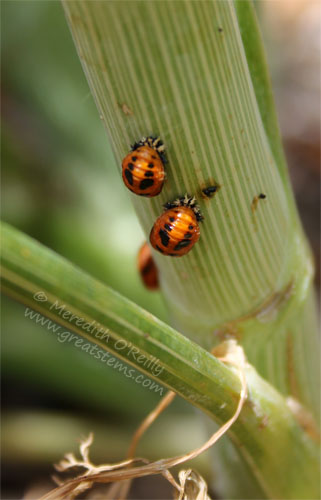
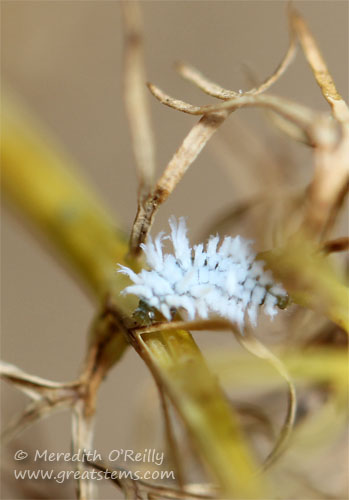
 Its softness isn’t just alluring to the touch — the velvety hairs and light blue-green color catch the light so subtly that the leaves almost beckon you to reach out with your fingertips. In fact, it can be so distracting that you almost have to refocus your eyes, as if viewing a stereogram, to look beyond the leaves to see what might actually be munching on them.
Its softness isn’t just alluring to the touch — the velvety hairs and light blue-green color catch the light so subtly that the leaves almost beckon you to reach out with your fingertips. In fact, it can be so distracting that you almost have to refocus your eyes, as if viewing a stereogram, to look beyond the leaves to see what might actually be munching on them.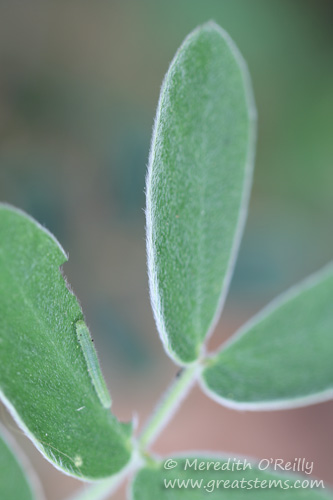
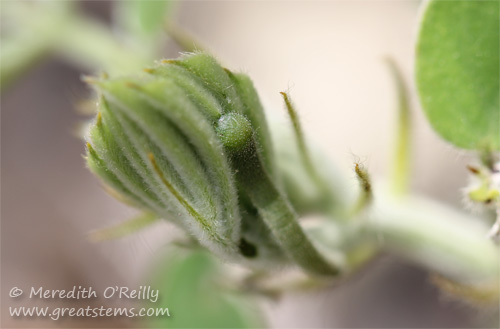
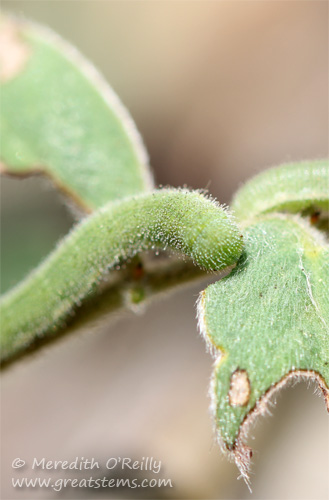
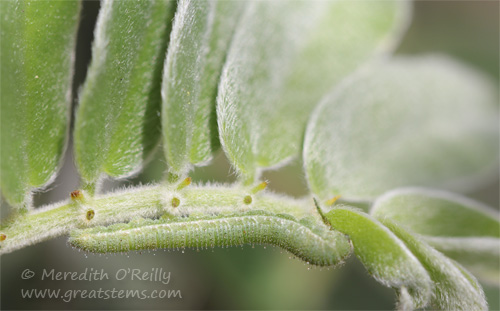
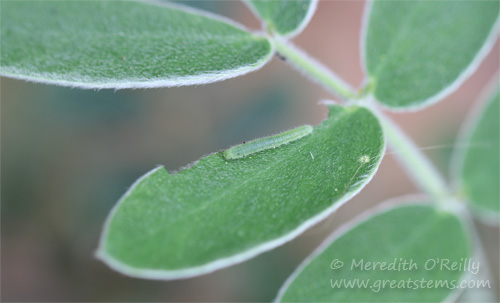 Other times, I found them along leaf edges, almost blending in with the light margins of the leaves.
Other times, I found them along leaf edges, almost blending in with the light margins of the leaves.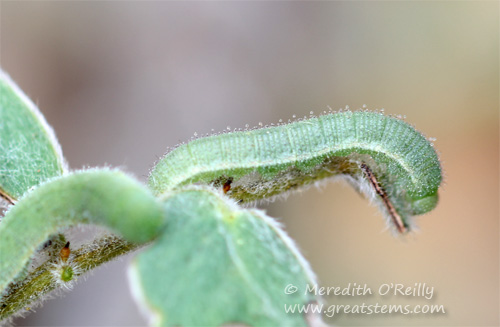
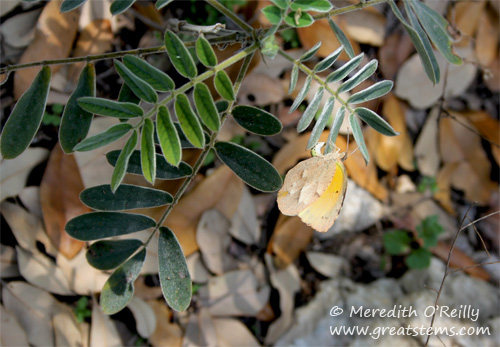
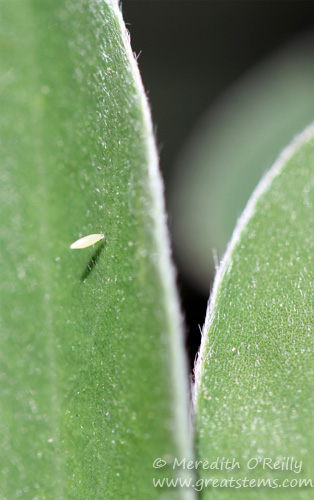
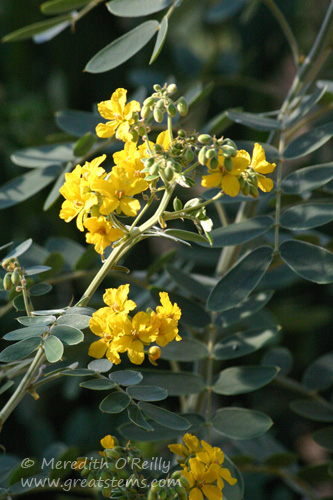
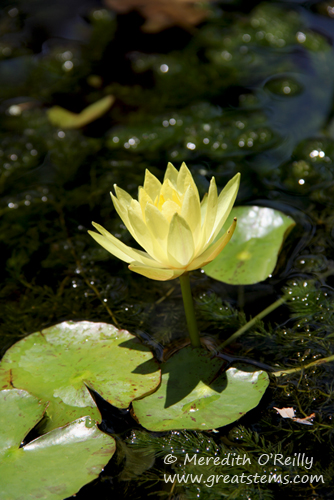
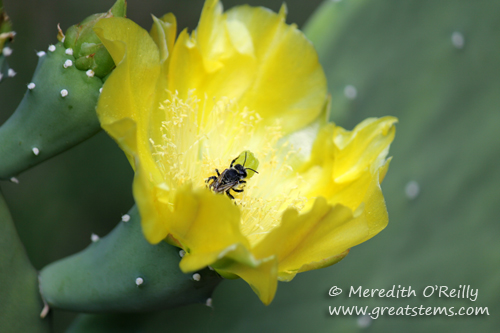
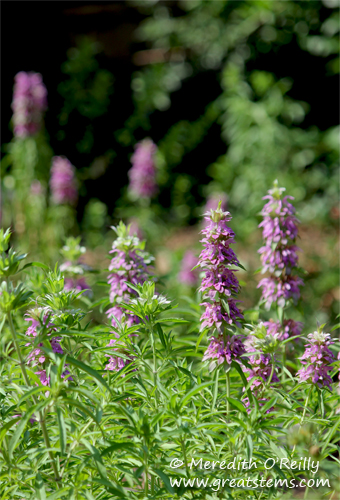
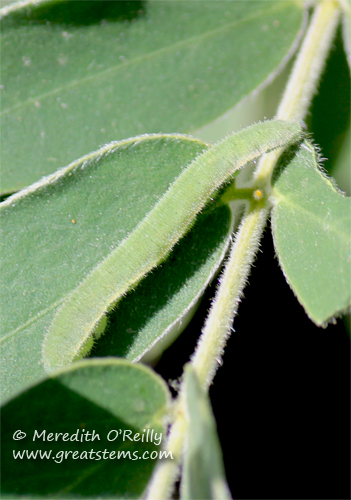
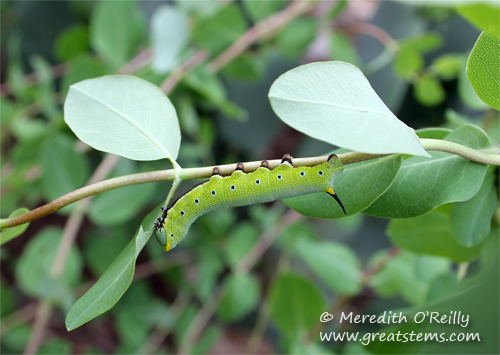
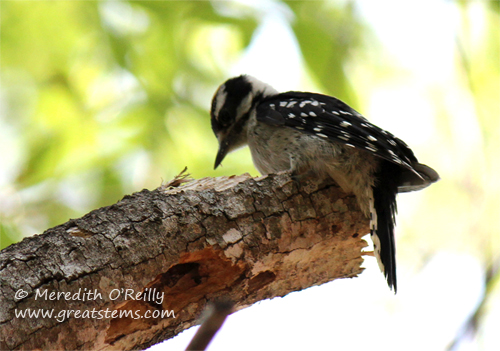
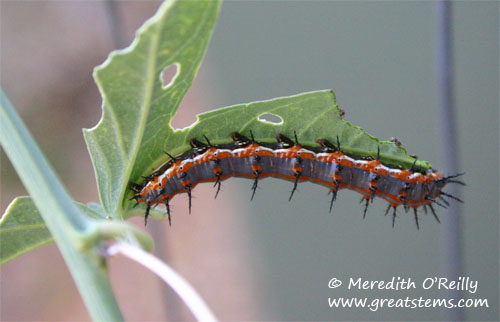
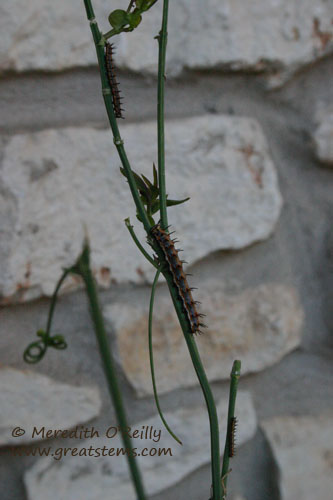 My poor plant, formerly known as “quite large,” has very few leaves left on it! Now I have to worry about the little caterpillars running out of food. My babies!
My poor plant, formerly known as “quite large,” has very few leaves left on it! Now I have to worry about the little caterpillars running out of food. My babies!